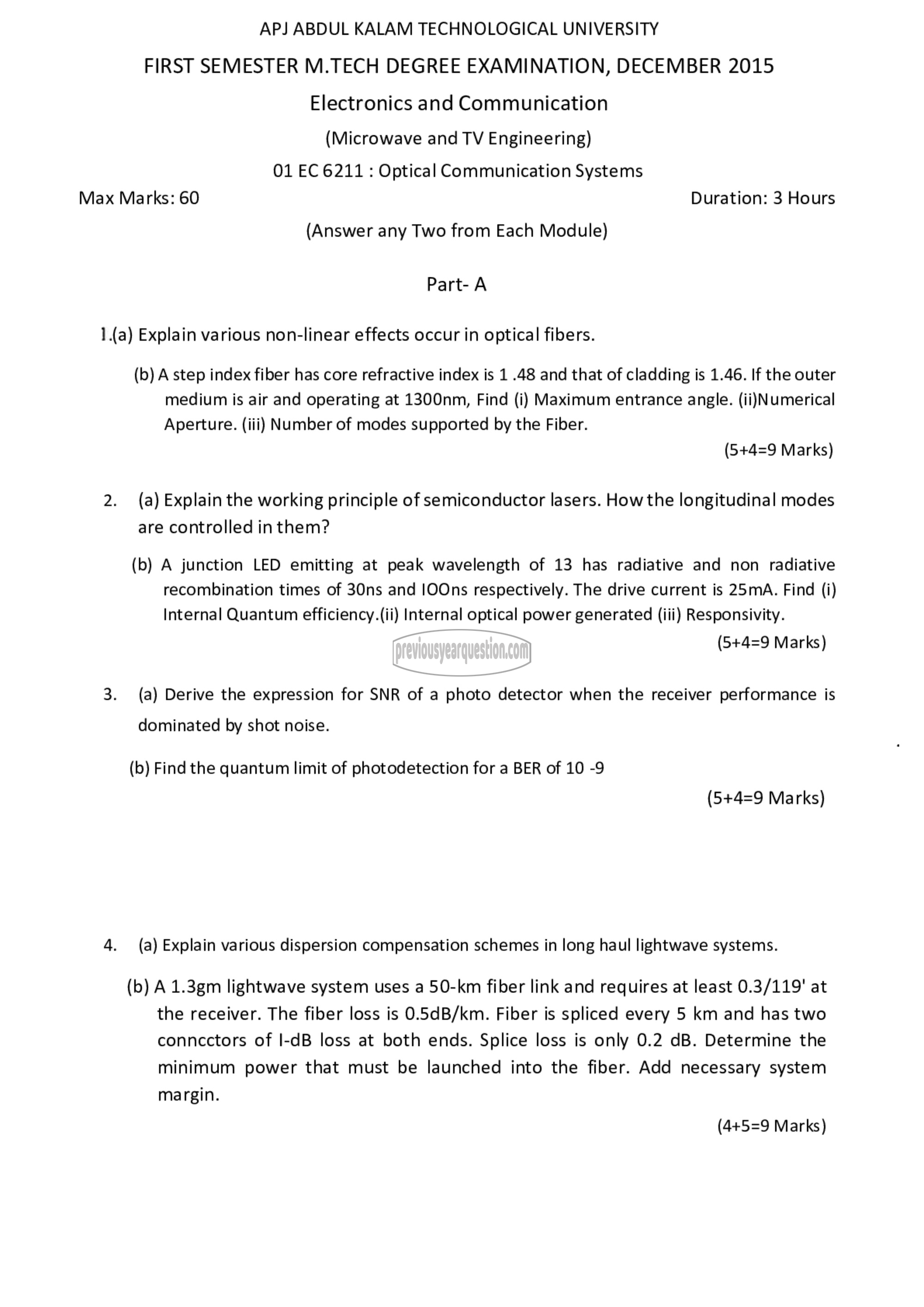APJ ABDUL KALAM TECHNOLOGICAL UNIVERSITY Previous Years Question Paper & Answer
Semester : SEMESTER 1
Subject : Optical Communication Systems
Year : 2015
Term : DECEMBER
Branch : MICROWAVE AND TV ENGINEERING
Scheme : 2015 Full Time
Course Code : 01 EC 6211
Page:1
APJ ABDUL KALAM TECHNOLOGICAL UNIVERSITY
FIRST SEMESTER M.TECH DEGREE EXAMINATION, DECEMBER 2015
Electronics and Communication
(Microwave and TV Engineering)
01 EC 6211 : Optical Communication Systems
Max Marks: 60 Duration: 3 Hours
(Answer any Two from Each Module)
Part-A
1.(2) Explain various non-linear effects occur in optical fibers.
(b) A step index fiber has core refractive index is 1 .48 and that of cladding is 1.46. If the outer
medium is air and operating at 1300nm, Find (i) Maximum entrance angle. (ii)Numerical
Aperture. (iii) Number of modes supported by the Fiber.
(5+4=9 Marks)
2. (2) Explain the working principle of semiconductor lasers. How the longitudinal modes
are controlled inthem?
(b) A junction LED emitting at peak wavelength of 13 has radiative and non radiative
recombination times of 3005 801005 respectively. The drive current is 25mA. Find (i)
Internal Quantum efficiency.(ii) Internal optical power generated (iii) Responsivity.
(5+4=9 Marks)
3. (8) Derive the expression for SNR of a photo detector when the receiver performance is
dominated by shot noise.
(b) Find the quantum limit of photodetection for a BER of 10 -9
(5+4=9 Marks)
4. (a) Explain various dispersion compensation schemes in long haul lightwave systems.
(b) A 1.3gm lightwave system uses a 50-km fiber link and requires at least 0.3/119' at
the receiver. The fiber loss is 0.5dB/km. Fiber is spliced every 5 km and has two
conncctors of I-dB loss at both ends. Splice loss is only 0.2 dB. Determine the
minimum power that must be launched into the fiber. Add necessary system
margin.
(4+5=9 Marks)
